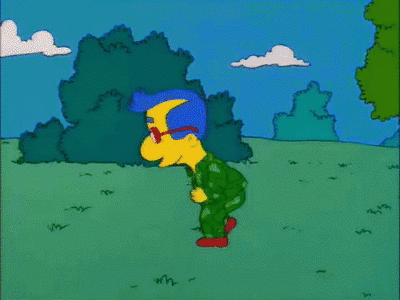The official discord link if you wish to join the discord: https://discord.gg/j5RKwCvAFu
Support the wiki on our official Ko-Fi page or Patreon page!
Camouflage: Difference between revisions
m |
|||
| (11 intermediate revisions by 3 users not shown) | |||
| Line 1: | Line 1: | ||
[[File: | [[File:Camouflage.gif|right|400px]] | ||
==Background== | ==Background== | ||
'''Camouflage''' | '''Camouflage''' is the use of any combination of materials, coloration, or illumination for concealment, either by making animals or objects hard to see, or by disguising them as something else. Examples include the leopard's spotted coat, the battledress of a modern soldier, and the leaf-mimic katydid's wings. A third approach, motion dazzle, confuses the observer with a conspicuous pattern, making the object visible but momentarily harder to locate. The majority of camouflage methods aim for crypsis, often through a general resemblance to the background, high contrast disruptive coloration, eliminating shadow, and countershading. In the open ocean, where there is no background, the principal methods of camouflage are transparency, silvering, and countershading, while the ability to produce light is among other things used for counter-illumination on the undersides of cephalopods such as squid. Some animals, such as chameleons and octopuses, are capable of actively changing their skin pattern and colours, whether for camouflage or for signalling. It is possible that some plants use camouflage to evade being eaten by herbivores. | ||
Military camouflage was spurred by the increasing range and accuracy of firearms in the 19th century. In particular the replacement of the inaccurate musket with the rifle made personal concealment in battle a survival skill. In the 20th century, military camouflage developed rapidly, especially during the First World War. On land, artists such as André Mare designed camouflage schemes and observation posts disguised as trees. At sea, merchant ships and troop carriers were painted in dazzle patterns that were highly visible, but designed to confuse enemy submarines as to the target's speed, range, and heading. During and after the Second World War, a variety of camouflage schemes were used for aircraft and for ground vehicles in different theatres of war. The use of radar since the mid-20th century has largely made camouflage for fixed-wing military aircraft obsolete. | |||
Higher level uses of this ability can essentially make a target invisible from their concealment being so advanced that even beings that can see invisible people wouldn't be able to notice them. | |||
Not to be confused with [[Invisibility]], which typically renders the user's body entirely transparent. | Not to be confused with [[Invisibility]], which typically renders the user's body entirely transparent. | ||
| Line 14: | Line 14: | ||
==Users== | ==Users== | ||
*[[Creeper]] (Minecraft) | *[[Creeper]] [[Minecraft|(Minecraft)]] | ||
*[[Solid Snake]] [[Metal Gear (Franchise)|(Metal Gear)]] | |||
*[[ | |||
[[Category:Powers and Abilities]] | [[Category:Powers and Abilities]] | ||
Revision as of 18:43, 9 October 2024

Background
Camouflage is the use of any combination of materials, coloration, or illumination for concealment, either by making animals or objects hard to see, or by disguising them as something else. Examples include the leopard's spotted coat, the battledress of a modern soldier, and the leaf-mimic katydid's wings. A third approach, motion dazzle, confuses the observer with a conspicuous pattern, making the object visible but momentarily harder to locate. The majority of camouflage methods aim for crypsis, often through a general resemblance to the background, high contrast disruptive coloration, eliminating shadow, and countershading. In the open ocean, where there is no background, the principal methods of camouflage are transparency, silvering, and countershading, while the ability to produce light is among other things used for counter-illumination on the undersides of cephalopods such as squid. Some animals, such as chameleons and octopuses, are capable of actively changing their skin pattern and colours, whether for camouflage or for signalling. It is possible that some plants use camouflage to evade being eaten by herbivores.
Military camouflage was spurred by the increasing range and accuracy of firearms in the 19th century. In particular the replacement of the inaccurate musket with the rifle made personal concealment in battle a survival skill. In the 20th century, military camouflage developed rapidly, especially during the First World War. On land, artists such as André Mare designed camouflage schemes and observation posts disguised as trees. At sea, merchant ships and troop carriers were painted in dazzle patterns that were highly visible, but designed to confuse enemy submarines as to the target's speed, range, and heading. During and after the Second World War, a variety of camouflage schemes were used for aircraft and for ground vehicles in different theatres of war. The use of radar since the mid-20th century has largely made camouflage for fixed-wing military aircraft obsolete.
Higher level uses of this ability can essentially make a target invisible from their concealment being so advanced that even beings that can see invisible people wouldn't be able to notice them.
Not to be confused with Invisibility, which typically renders the user's body entirely transparent.
Limitations
- Sudden movements may reveal the user's position.
- Opponents with especially keen or trained senses may be able to see through it.
